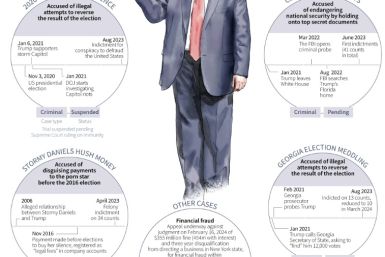Daily Forex Forecast 05/10/2013
Australian Dollar:
It has been a roller coaster ride for the Aussie over the past 24 hours, which saw it initially move higher on the back of strong local employment data before a sharp rally in the greenback last night saw us give up those gains and then some, to trade at close to 11 month lows. Yesterday, during Asian trade, the Aussie recovered off post-RBA lows after our employment data came in much better than expected. Forecasters were looking for a gain of around 11k for the month but instead the ABS reported 50k new jobs added, 34k of which were full time. As a result the unemployment rate ticked back down to 5.5% after increasing to 5.6% last month. On its own, all of these figures should be incredibly positive for the dollar but given recent large fluctuations; with good numbers in February and poor numbers in March, it would be a mistake to get too excited. Last night showed just how quickly things can change as positive US employment data and hawkish comments from a Fed member sent the greenback up and the Aussie tumbling as we easily broke through the key 1.0150 level to trade nearly a cent lower before settling into this morning’s open at 1.0085. This morning sees the RBA policy statement which could help decide if we recapture 1.01 or continue moves lower towards parity.
We expect a range today of 1.0040– 1.0115
New Zealand Dollar:
There have been some sharp moves in the kiwi over the past few sessions as initial gains from positive employment data were wiped out by a rallying greenback. The kiwi managed to rebound yesterday off recent lows after some better than expected employment figures showed employment gained 1.7% for the quarter compared to expectations to of a 0.8% gain. The unemployment rate also improved, dropping to 6.2% from 6.8% last quarter. This improvement should now allow the RBNZ to actively target rising house prices which it sees as a risk for financial stability going forward. This data initially saw the Kiwi move beyond 0.8470 against its US counterpart, however this morning we find it back at 0.8400, after the greenback rallied against all of its major counterparts on its own improving employment data and speculation the Fed will end stimulus sooner than expected. Some of the biggest gains for the US dollar were against the Yen, breaking above 100, which has also seen our own currency move past 84.50 against the Japanese Yen.
We expect a range today of 0.8345 – 0.8440
Great British Pound:
Last night, after initially moving beyond 1.5550 following the Bank of England policy announcement and then better than expected industrial production, the pound fell against a fast moving greenback to trade over a cent lower this morning. As widely expected the Bank of England kept interest rates and its asset purchase target unchanged at 0.5% and 375 billion pounds respectively, but it was the industrial production figures, coming in at 0.7%, that saw the pound move higher against most of its major counterparts, reaching close to 1.5585 during European trade. Heading into the US, some positive employment numbers and comments from a Fed member had the greenback rallying through keys levels against the Yen, which translated into the cable falling back through 1.55 to eventually find support at 1.5450 which is where we find it this morning. Meanwhile pound is flat against the Kiwi (1.8400) but noticeably stronger against the Aussie (1.5325), which also took a lot of the brunt of the strengthening greenback.
We expect a range today of 1.5275 – 1.5355
Majors:
Yesterday’s Asian and European sessions were all relatively quiet for the major currencies, so most investors would have been excused for thinking we were destined to continue to trade sideways till this morning’s open. This did not eventuate, as a strong improvement in weekly job numbers in the US were enough to spark a greenback rally, pushing it higher against most of its major counterparts. One of the bigger movements was against the Yen, and it could be argued that the breaching of the key psychological level of 100 has only stoked the fires for further gains. Over the past two months, as the Yen has been weakening on the back of the greater than expected easing measures by the Bank of Japan, the 100 level has held firm. Last night, after initial jobless claims fell by 4k for the week to 323k, the lowest in 5 years, the USD/JPY began moving gradually higher from 98.75, before it found resistance in the mid 99 levels. Later, comments from Fed member Plosser in regards to scaling back stimulus were enough to break 99.75 which saw it move straight through to 100.75 which is where we find it this morning. In terms of the Euro, prior to the US employment data we were trading comfortably between 1.3125 and 1.3175 but now find ourselves back at 1.3035. Today will likely see continued greenback strength as speculation fills the markets as to whether there was more to this move than is immediately obvious.
Data releases:
AUD:
RBA monetary policy statement
NZD Card spending
JPY:
Trade balance, Bank lending and trusts, Current account balance, Bankruptcies, Eco watchers
GBP Construction output, Visible trade balance
EUR:
German trade balance, German current account
USD:
Monthly budget statement, Bernanke speaks






